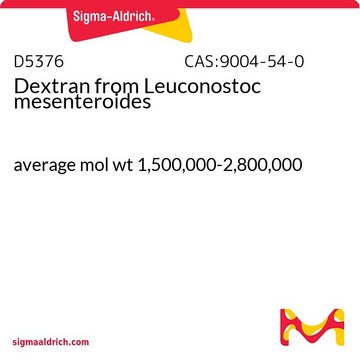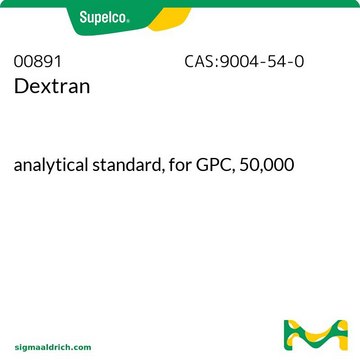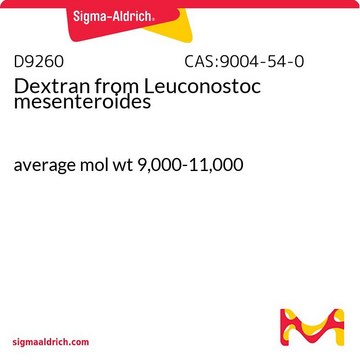31424
Dextrano from Leuconostoc mesenteroides
analytical standard, for GPC, Mw 410,000
About This Item
Productos recomendados
grade
analytical standard
for GPC
Quality Level
mol wt
Mn ~235,000
Mp ~275,000
Mw ~410,000
analyte chemical class(es)
oligosaccharides
technique(s)
gel permeation chromatography (GPC): suitable
Mw/Mn
~1.74
application(s)
food and beverages
format
neat
InChI
1S/C18H32O16/c19-1-5(21)9(23)10(24)6(22)3-31-17-16(30)14(28)12(26)8(34-17)4-32-18-15(29)13(27)11(25)7(2-20)33-18/h1,5-18,20-30H,2-4H2
InChI key
FZWBNHMXJMCXLU-UHFFFAOYSA-N
¿Está buscando productos similares? Visita Guía de comparación de productos
General description
Dextran from Leuconostoc mesenteroides (Mw: 410,000), may be used as an analytical standard to calibrate the column for gel permeation chromatography (GPC).
Application
Storage Class
11 - Combustible Solids
wgk_germany
WGK 2
ppe
Eyeshields, Gloves, type N95 (US)
Elija entre una de las versiones más recientes:
¿Ya tiene este producto?
Encuentre la documentación para los productos que ha comprado recientemente en la Biblioteca de documentos.
Los clientes también vieron
Nuestro equipo de científicos tiene experiencia en todas las áreas de investigación: Ciencias de la vida, Ciencia de los materiales, Síntesis química, Cromatografía, Analítica y muchas otras.
Póngase en contacto con el Servicio técnico










